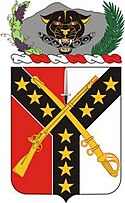
The 1st Cavalry Regiment is a United States Army regiment that has its antecedents in the early 19th century in the formation of the United States Regiment of Dragoons. To this day, the unit's special designation is "First Regiment of Dragoons". While they were the First Regiment of Dragoons another unit designated the 1st Cavalry Regiment was formed in 1855 and in 1861 was re-designated as the 4th Cavalry Regiment. The First Dragoons became the 1st Cavalry Regiment since they were the oldest mounted regiment.
Reconnaissance, surveillance, and target acquisition (RSTA) groups the tasks of reconnaissance, surveillance and target acquisition conducted by the Department of Defense. RSTA supports military operations at a strategic, operational, or tactical level, either by dedicated RSTA forces or those which possess the capability.

The 17th Cavalry Regiment is a historical organization within the United States Army that began as a regiment of cavalry after the Pancho Villa Expedition. The unit was constituted on 1 July 1916 in the Regular Army as the 17th Cavalry at Fort Bliss, Texas and originally inactivated 26 September 1921 at the Presidio of Monterey, California. Formerly a part of the 1950s Combat Arms Regimental System, it was reorganized as a part of the U.S. Army Regimental System, an ongoing effort to maintain the lineage and history of the U.S. Army through its units. Today, the 17th Cavalry Regiment is found across the army within the combat aviation brigades, where the squadrons, now constituted as attack/recon helicopter squadrons, carry on the legacy of the 17th Cavalry Regiment.
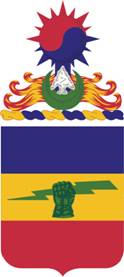
The 73rd Cavalry Regiment is a Cavalry Regiment in the United States Army, first formed in 1941. The three squadrons of the 73rd Cavalry Regiment provide reconnaissance, surveillance, and target acquisition (RSTA) to the Brigade Combat Teams of the 82nd Airborne Division. 3rd Squadron is assigned to 1st Brigade, 1st Squadron is assigned to 2nd Brigade, and 5th Squadron is assigned to 3rd Brigade.
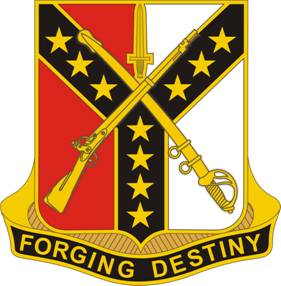
The 601st Tank Destroyer Battalion was a battalion of the United States Army active during World War II. It was the first of the newly formed tank destroyer battalions to see combat, and the only one to fight as a "pure" tank destroyer force. It also has the unusual distinction of being one of the few American units to fight in all three major campaigns against Nazi Germany and to have participated in four assault landings.

The 106th Cavalry Regiment was a mechanized cavalry unit of the United States Army in World War II recognized for its outstanding action. The group was organized in 1921 as part of the Illinois National Guard and during the Spanish–American War and World War I was known as the 1st Regiment Illinois Volunteer Cavalry. It underwent a number of reorganizations before World War II. Like other Guard units during the inter-war years, the 106th held weekly or monthly drills and yearly training. Readiness for war in 1940 led to the mechanization of the unit and induction into federal service at Camp Livingston, Louisiana on 25 November 1940.

The 112th Cavalry Regiment is a Texas National Guard regiment that served in several Pacific campaigns during World War II.

The 1st Squadron, 91st Cavalry Regiment (Airborne) is a light Airborne Reconnaissance Squadron currently serving as the 173rd Airborne Brigade's Reconnaissance, Surveillance and Targeting Acquisition (RSTA) Squadron based out of Tower Barracks in Grafenwöhr, Germany. It is the only Airborne RSTA Squadron within the European, Middle East, and Africa (EMEA) area of responsibility.

The 71st Cavalry was originally constituted on 3 December 1941 in the Army of the United States as the 701st Tank Destroyer Battalion.

The 27th Field Artillery Regiment is a field artillery regiment of the United States Army, first Constituted in 1918 in the National Army (USA).
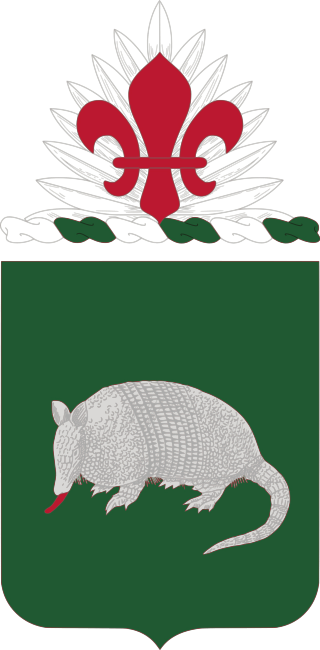
The 35th Armored Regiment is a regiment of the United States Army first established in 1941. The lineage of the regiment is carried on by the 1st Battalion 35th Armored Regiment, currently attached to the 2nd Brigade Combat Team, 1st Armored Division.
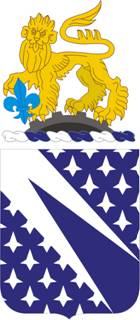
The 89th Cavalry Regiment is a Regiment of the United States Army first established in 1940.

The 98th Cavalry Regiment is a parent regiment of the United States Army established in 2006. It is represented in the Mississippi Army National Guard by the 1st Squadron, 98th Cavalry, an element of the 155th Armored Brigade Combat Team.

The 102nd Cavalry Regiment is a regiment of the United States Army first established in 1913 and which saw service in World War II.

The 104th Cavalry Regiment is a Regiment of the United States Army first established in 1921. Troop A, 1st Squadron is one of several National Guard units with colonial roots and campaign credit for the War of 1812.

The 82d Aviation Regiment, part of the U.S. Army, has three battalions and one separate company under the Combat Aviation Brigade, 82d Airborne Division. The brigade also has the 1st Squadron, 17th Cavalry Regiment and the 122d Aviation Support Battalion. The lineages for the Combat Aviation Brigade, 82d Airborne Division and its subordinate units of the 82d Aviation Regiment, although often mistaken for one another, are separate.

The Soviet order of battle for Operation Uranus details the combat units of the Soviet forces that fought in Operation Uranus, the Soviet strategic counteroffensive that led to the encirclement of the German troops in Stalingrad. The order of battle lists units present on 19 November 1942, the day the operation began, from north to south.
The 105th Cavalry Regiment is a regiment in the United States Army National Guard.
The 126th Field Artillery Regiment was a regiment in the United States Army National Guard.
